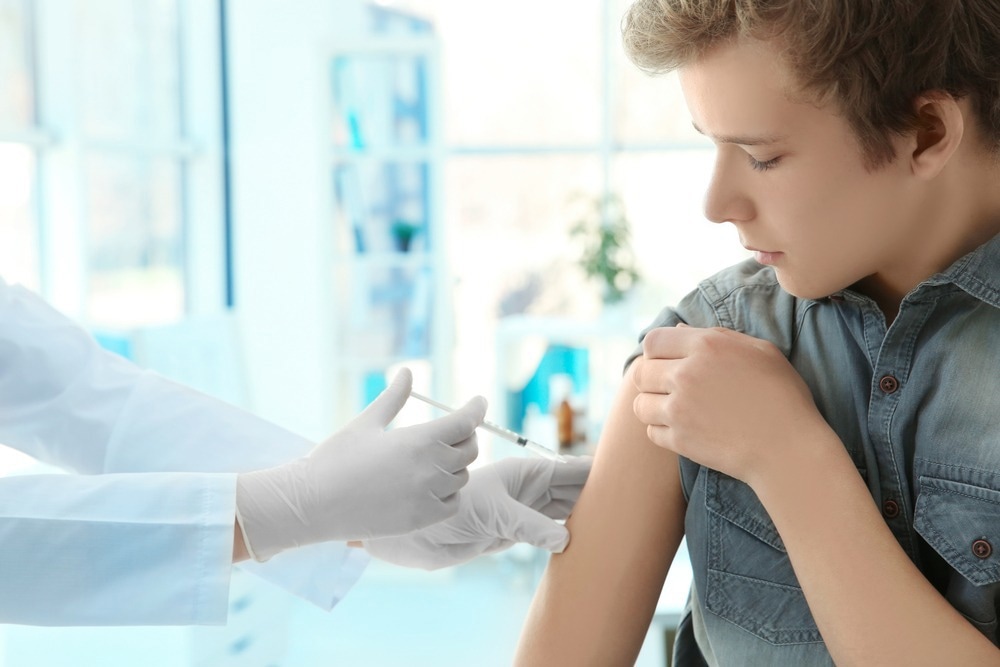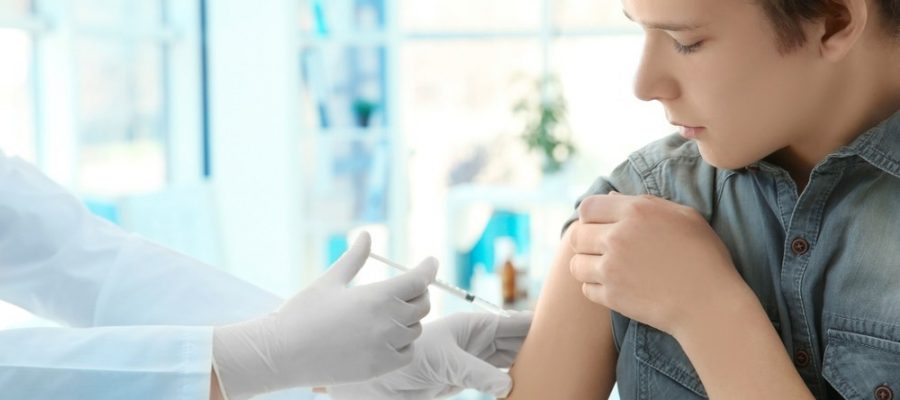In a recent study published on the medRxiv* preprint server, Taiwanese scientists determined the risk of myocarditis and pericarditis among young individuals who have received messenger ribonucleic acid (mRNA)-based coronavirus disease 2019 (COVID-19) vaccines.

Study: Risk of Myocarditis and Pericarditis Following Coronavirus Disease 2019 Messenger RNA Vaccination—A Nationwide Study. Image Credit: Africa Studio / Shutterstock.com
Background
Mass COVID-19 vaccination campaigns implemented worldwide have significantly helped control the pandemic trajectory. Among the various vaccines developed, mRNA- and adenovirus vector-based vaccines have been associated with greater efficacy in reducing severe acute respiratory syndrome coronavirus 2 (SARS-CoV-2) infection, hospitalization, and mortality.
Regarding safety issues related to COVID-19 vaccines, many studies have suggested that mRNA-based vaccines might increase the risk of myocarditis and pericarditis among young individuals, particularly after the second dose. However, a high level of discrepancies has been observed between studies, which could be due to variations in ethnicities, monitoring methods, case definitions, and post-vaccination observation periods.
A growing pool of evidence also suggests that the risk of myocarditis and pericarditis might be associated with the duration between the administration of two primary vaccine doses. While some countries have considered a four-week interval between doses, some have chosen a relatively long interval of eight to 12 weeks.
In the current study, scientists estimate the prevalence of myocarditis and pericarditis in Taiwan following homologous (two doses of the same vaccine) and heterologous (two doses of different vaccines) mRNA-based COVID-19 vaccination. To this end, they stratify the prevalence based on the age and gender of vaccine recipients and between-dose intervals.
Prevalence of myocarditis and pericarditis
The study estimated the prevalence of myocarditis and pericarditis between March 2021 and February 2022. A total of 5,957 and 2,408 adverse events had been reported following the first and second vaccination, respectively, to an online vaccine-related adversity reporting system in Taiwan.
A total of 238 cases of myocarditis and pericarditis were identified, including 189 cases of myocarditis and myopericarditis, as well as 49 cases of pericarditis alone. Of the identified cases, 203 required hospitalization, and 101 required intensive care unit (ICU) admission. Among ICU-admitted patients, nine required oxygen therapy, and four died.
Considering the number of vaccine doses, myocarditis and pericarditis occurred in 90 and 148 patients after the first and second dose, respectively. About 70% of the patients with homologous vaccination were male between 12 and 85 years old.
Most patients who developed myocarditis and pericarditis after the second dose received two doses of the same vaccine at an interval of more than 90 days.
Impacting factors on myocarditis/pericarditis prevalence
Among patients aged 18 years and above who had received the first dose of the Pfizer-BioNTech BNT162b2 vaccine, the prevalence of myocarditis/pericarditis was four cases per million of vaccine male recipients and five cases per million female recipients. In contrast, the prevalence after the second dose in males and females was nine and three cases per million recipients, respectively.
Among patients aged 18 years and older who had received the first dose of the Moderna mRNA 1273 vaccine, the prevalence of myocarditis/pericarditis was five cases per million of vaccine male recipients and nine cases per million female recipients. The prevalence after the second dose in males and females was two and six cases per million recipients, respectively.
Considering both genders and all age groups, the highest prevalence of myocarditis/pericarditis was observed after the second dose in males between the ages of 12-17 years for the Pfizer vaccine and males aged 18–24 years for the Moderna vaccine.
Regarding the interval between two vaccine doses, no significant association was observed between longer intervals and a lower prevalence of myocarditis/pericarditis. Regarding heterologous vaccination, a significantly higher prevalence of myocarditis/pericarditis was observed in males and females aged 18-49 years after receiving an adenovirus vector (Oxford/AstraZeneca) vaccine followed by a Moderna booster vaccine dose as compared to homozygous AstraZeneca vaccination.
Study significance
The study reveals a low prevalence of myocarditis/pericarditis after mRNA-based COVID-19 vaccination. However, young males might be at a higher risk of developing the conditions after receiving a second COVID-19 vaccine dose.
*Important notice
medRxiv publishes preliminary scientific reports that are not peer-reviewed and, therefore, should not be regarded as conclusive, guide clinical practice/health-related behavior, or treated as established information.
- Su, W., Liu, Y., Chang, C., et al. (2022). Risk of Myocarditis and Pericarditis Following Coronavirus Disease 2019 Messenger RNA Vaccination—A Nationwide Study. medRxiv. doi:10.1101/2022.10.11.22280860. https://www.medrxiv.org/content/10.1101/2022.10.11.22280860v1.
Posted in: Child Health News | Men's Health News | Medical Science News | Medical Research News | Women's Health News | Disease/Infection News
Tags: Adenovirus, Coronavirus, Coronavirus Disease COVID-19, Efficacy, Homologous, Intensive Care, Mortality, Myocarditis, Oxygen, Oxygen Therapy, Pandemic, Pericarditis, Respiratory, Ribonucleic Acid, RNA, SARS, SARS-CoV-2, Severe Acute Respiratory, Severe Acute Respiratory Syndrome, Syndrome, Vaccine

Written by
Dr. Sanchari Sinha Dutta
Dr. Sanchari Sinha Dutta is a science communicator who believes in spreading the power of science in every corner of the world. She has a Bachelor of Science (B.Sc.) degree and a Master's of Science (M.Sc.) in biology and human physiology. Following her Master's degree, Sanchari went on to study a Ph.D. in human physiology. She has authored more than 10 original research articles, all of which have been published in world renowned international journals.
Source: Read Full Article
